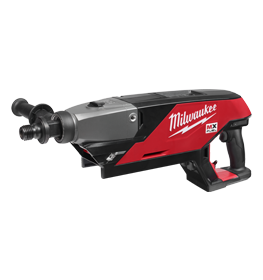
Drilling into Brick: A Beginner’s Guide
Drilling into your walls is a DIY skill which will definitely come in handy. From fitting shelving, pictures, and curtain poles, drilling will allow you to hang items from your wall and decorate.
The main thing to know is that you cannot drill straight into brick. You must drill a hole, insert a wall plug, and then screw the fitting into this.
Brick is stronger than other materials, such as plasterboard. So, it is a relatively easy skill to pick up. Here is everything you need to know about drilling into brickwork.
The right tools for the job
First of all, you need the correct tools for drilling into the chosen material.
PPE is really important when drilling, so ensure you’re wearing this before you begin. You need eye protection, ear protection, a dust mask, and gloves. You should also be wearing safety boots. All necessary PPE can be purchased from Speedy Hire.
The drill will do most of the work. A regular cordless drill (such as an impact driver) can make small holes, which is fine for hanging very light picture frames or drilling in hooks for string lighting.
For anything heavier, which needs a larger hole, you’ll need a rotary hammer drill. This gives you a bit more force, making drilling into tough compact materials much easier.
With brickwork, you’ll need a masonry drill bit. With an arrow-shaped head, it can drive into the wall and give you the power required. They’re available in various sizes, for the size of hole required.
To choose the correct drill bit, you need to reverse the process. Ask yourself:
- What are you fitting?
- What size screws does that require?
- What size wall plug will that need?
You need to use a drill bit at least as large as your wall plug. Any smaller, and it won’t fit. Any larger, and there will be too much space for the wall plug to sit comfortably.
How to Drill into Brickwork
The first step is to identify the material. For older houses, exterior walls are often brick. Internal walls may be brick or timber studs. Give the wall a knock; stud or plasterboard will sound hollow, and brick or stone sound solid.
If you’re unsure, check your survey from before you moved in. This may give you more information.
You will need:
- Cable detector
- Tape measure
- Spirit level
- Rotary hammer drill or impact driver
- Screwdriver
- Wall plug
- Screw
Did you know: A Rawlplug is a brand name for a wall plug, so the terms are often interchanged, but they do the same job.
1. Check for pipes and cables
Before doing any DIY, you need to check the walls for pipes and cables. Hire a cable and pipe detector from Speedy for this job; they will tell you what is behind the walls, and what to avoid.
Even if you think you know where the wires are, never miss this step. With a pencil, mark on the wall anywhere you need to avoid.
2. Mark your drilling point
Once you know where you can and can’t drill, you need to decide where your screws will go.
Use a tape measure to get the correct spacing and positioning on the wall. Once you’re happy, mark your drill hole destinations with a pencil.
A spirit level may come in handy if you’re screwing more than one hole to hang something up.
3. Drill the wall
Hold the drill with both hands, one on the front safety handle. Start really slowly to make a slight indentation in the wall first; this will give your drill a place to grip.
SPEEDY TOP TIP: Have you drilled deep enough? Measure the drill bit against your wall plug so you have a rough idea of how far to go. Stop and check if the wall plug goes in far enough if you’re unsure.
4. Clean up
Once you’re happy with the hole, clean the area before moving on to the next step. Brick dust can be messy, so use a vacuum cleaner to collect it.
5. Insert the wall plug
A wall plug can sometimes just push into the wall, but if it is a snug fit, use a mallet or hammer to gently tap it in until it is flush with the wall.
SPEEDY TOP TIP: Plastic wall plugs are good for brick, as they can expand to fit the space once you insert the screw.
6. Insert the screw
Using an impact driver or simply a manual screwdriver, drive the screw into the wall plug and wall. Depending on what you’re fitting, you may need to put this in place before screwing.
Once this is in, your screw should be tight and strong enough to hold your shelf or curtain pole up.
READY FOR MORE DIY TIPS?
Need to fill some old holes? We have a guide on how to fill and repair holes in your wall.
You should also read our guide on DIY safety tips if attempting any work at home.
When you’re ready to hire your drill, open a Speedy account to check out online or visit us in-store.
Speedy has more than 200 local service centres across the nation, hire counters in selected B&Qs and nationwide 4-hour delivery. It has never been easier to hire the tools and equipment you need.
For more tips subscribe to our YouTube Channel
Find ideas on Instagram
- 2024
- 2023
- December 2023 (13)
- November 2023 (9)
- October 2023 (7)
- September 2023 (10)
- August 2023 (20)
- July 2023 (21)
- June 2023 (17)
- May 2023 (17)
- April 2023 (16)
- March 2023 (14)
- February 2023 (15)
- January 2023 (7)
- 2022
- December 2022 (6)
- November 2022 (12)
- October 2022 (24)
- September 2022 (14)
- August 2022 (12)
- July 2022 (15)
- June 2022 (18)
- May 2022 (14)
- April 2022 (9)
- March 2022 (5)
- February 2022 (5)
- January 2022 (2)
- 2021
- December 2021 (7)
- November 2021 (10)
- October 2021 (1)
- September 2021 (1)
- August 2021 (3)
- July 2021 (3)
- June 2021 (4)
- May 2021 (1)
- April 2021 (1)
- March 2021 (2)
- February 2021 (1)
- January 2021 (1)
- 2020
- 2019
- 2017
- 2016
- 2014
- 2013
- 2012
- 2011


